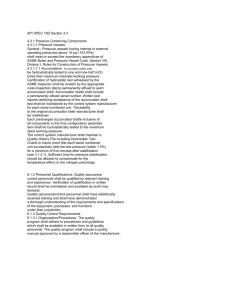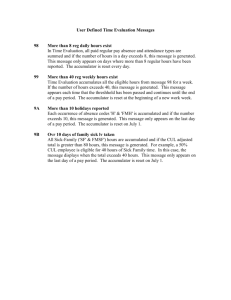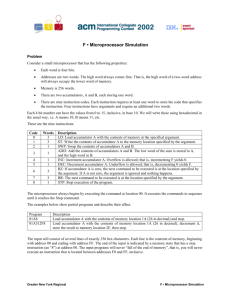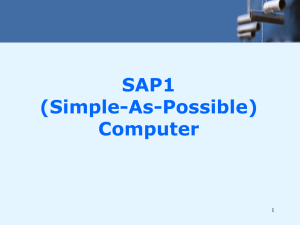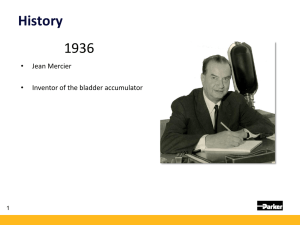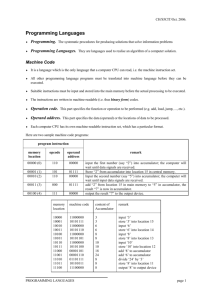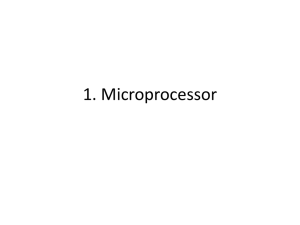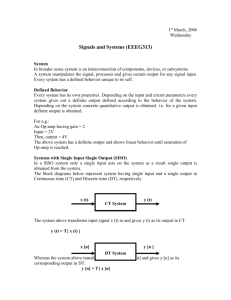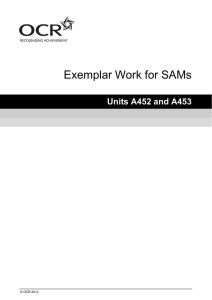Addition Subtraction - Co-operative Academy Computing
advertisement
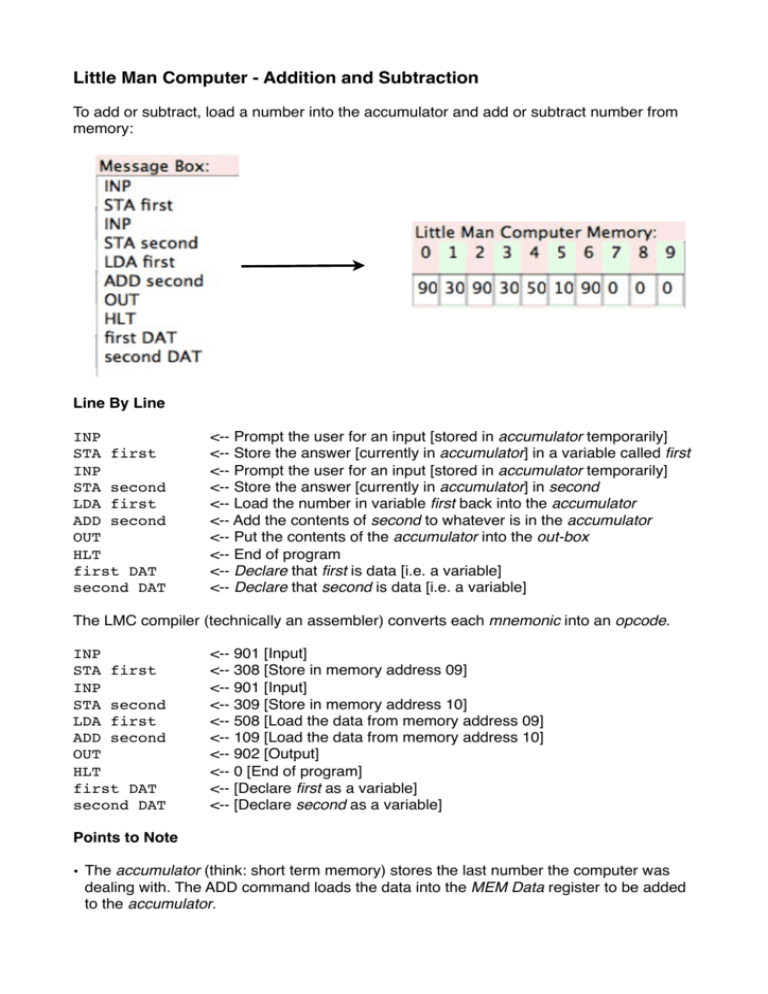
Little Man Computer - Addition and Subtraction To add or subtract, load a number into the accumulator and add or subtract number from memory: Line By Line INP! ! ! STA first! ! INP! ! ! STA second! LDA first! ! ADD second! OUT! ! ! HLT! ! ! first DAT! ! second DAT! <-- Prompt the user for an input [stored in accumulator temporarily] <-- Store the answer [currently in accumulator] in a variable called first <-- Prompt the user for an input [stored in accumulator temporarily] <-- Store the answer [currently in accumulator] in second <-- Load the number in variable first back into the accumulator <-- Add the contents of second to whatever is in the accumulator <-- Put the contents of the accumulator into the out-box <-- End of program <-- Declare that first is data [i.e. a variable] <-- Declare that second is data [i.e. a variable] The LMC compiler (technically an assembler) converts each mnemonic into an opcode. INP! ! ! STA first! ! INP! ! ! STA second! LDA first! ! ADD second! OUT! ! ! HLT! ! ! first DAT! ! second DAT! <-- 901 [Input] <-- 308 [Store in memory address 09] <-- 901 [Input] <-- 309 [Store in memory address 10] <-- 508 [Load the data from memory address 09] <-- 109 [Load the data from memory address 10] <-- 902 [Output] <-- 0 [End of program] <-- [Declare first as a variable] <-- [Declare second as a variable] Points to Note • The accumulator (think: short term memory) stores the last number the computer was dealing with. The ADD command loads the data into the MEM Data register to be added to the accumulator. Subtraction Line By Line INP! ! ! STA first! ! INP! ! ! STA second! LDA first! ! SUB second! OUT! ! ! HLT! ! ! first DAT! ! second DAT! <-- Prompt the user for an input [stored in accumulator temporarily] <-- Store the answer [currently in accumulator] in a variable called first <-- Prompt the user for an input [stored in accumulator temporarily] <-- Store the answer [currently in accumulator] in second <-- Load the number in variable first back into the accumulator <-- Subtract the contents of second from what is in the accumulator <-- Put the contents of the accumulator into the out-box <-- End of program <-- Declare that first is data [i.e. a variable] <-- Declare that second is data [i.e. a variable] The LMC compiler (technically an assembler) converts each mnemonic into an opcode. INP! ! ! STA first! ! INP! ! ! STA second! LDA first! ! SUB second! OUT! ! ! HLT! ! ! first DAT! ! second DAT! <-- 901 [Input] <-- 308 [Store in memory address 09] <-- 901 [Input] <-- 309 [Store in memory address 10] <-- 508 [Load the data from memory address 09] <-- 209 [Load the data from memory address 10] <-- 902 [Output] <-- 0 [End of program] <-- [Declare first as a variable] <-- [Declare second as a variable] Points to Note • It is important to get the subtraction the right way round. This sometimes requires a good bit of thought! A good general rule is to always store each number in a variable - just in case you need it later. • The LMC can cope with negative numbers as well as positive numbers.
